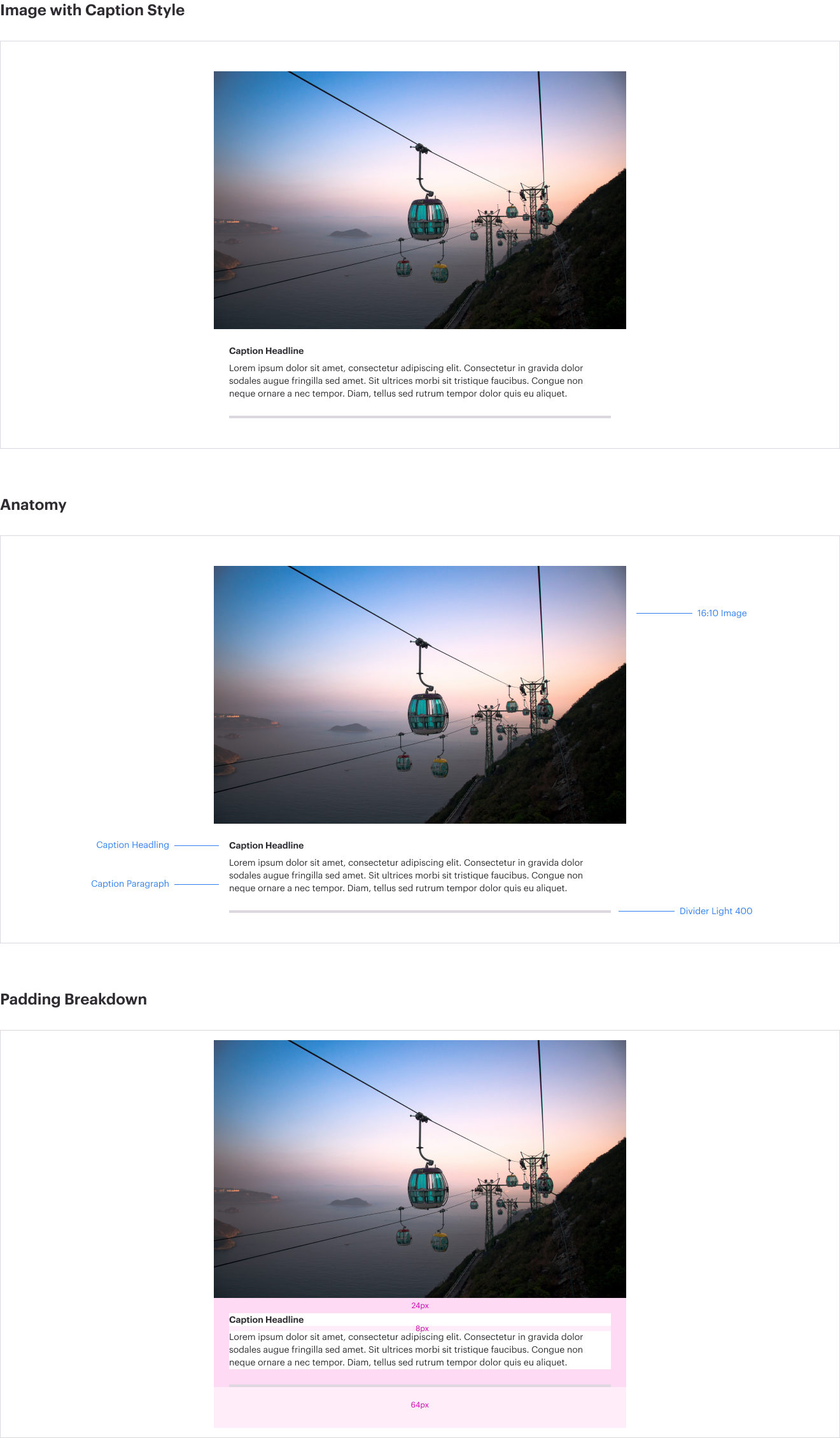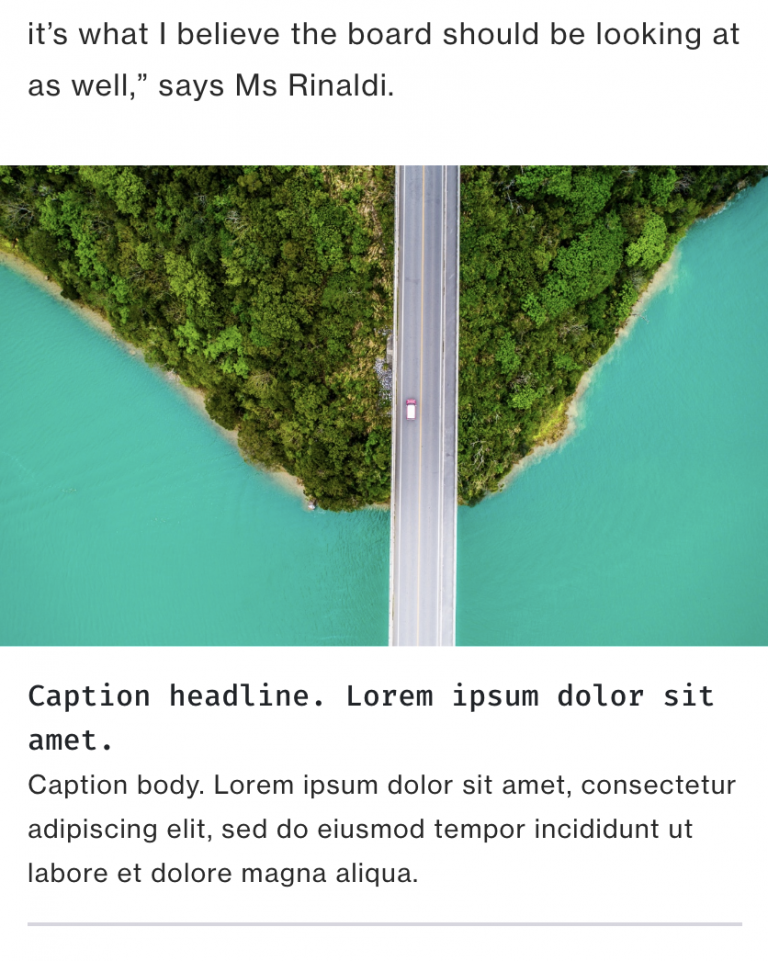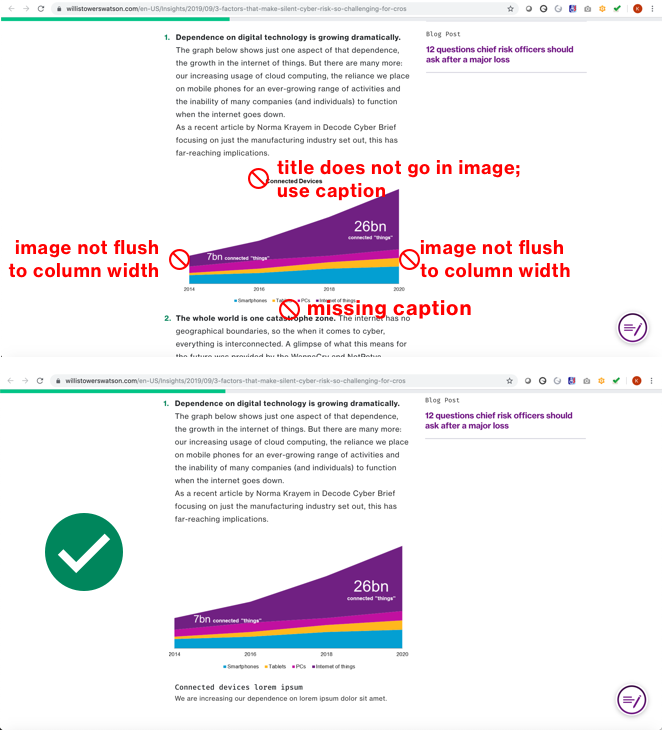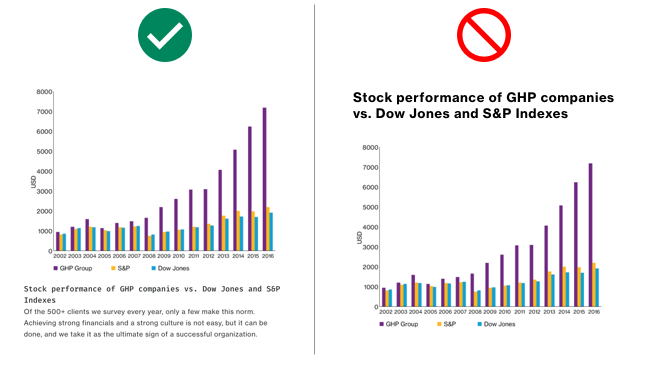Imagery is a compelling part of our brand. When placing imagery within the content of a page, inline images should always have captions (to provide context and accessibility compliance).
Imagery helps create a pleasant user experience when created and designed properly. Imagery can provide information (remember accessibility!), improve branding aesthetic, and improve the user’s ability to scan material and engage with it.
Anytime an image is placed in the body of a page, it must have a caption and alt text associated with it. Before adding an image to a page, make sure you review the Accessibility > Imagerypage.
An image must always contain a caption for UX, accessibility, and SEO.



